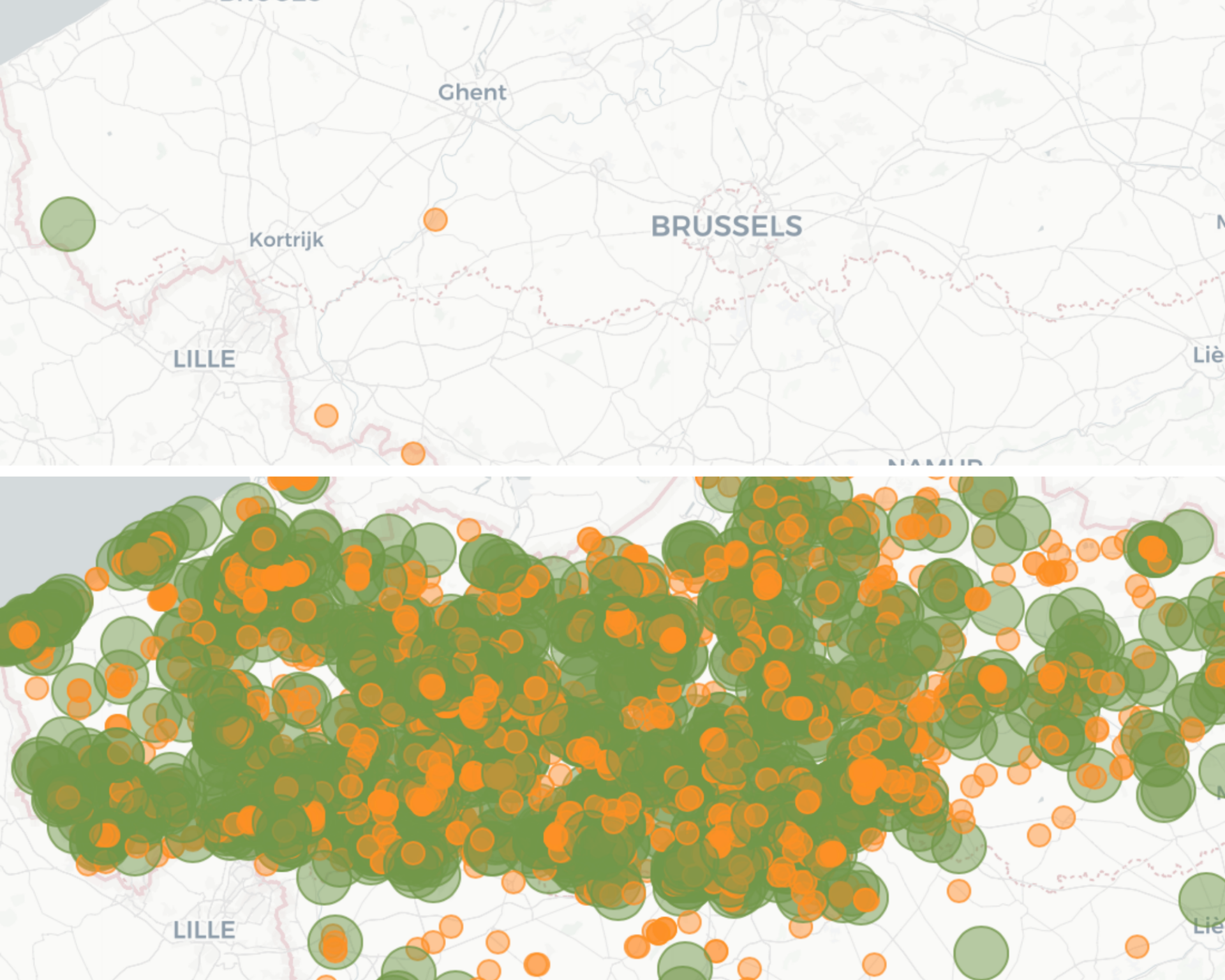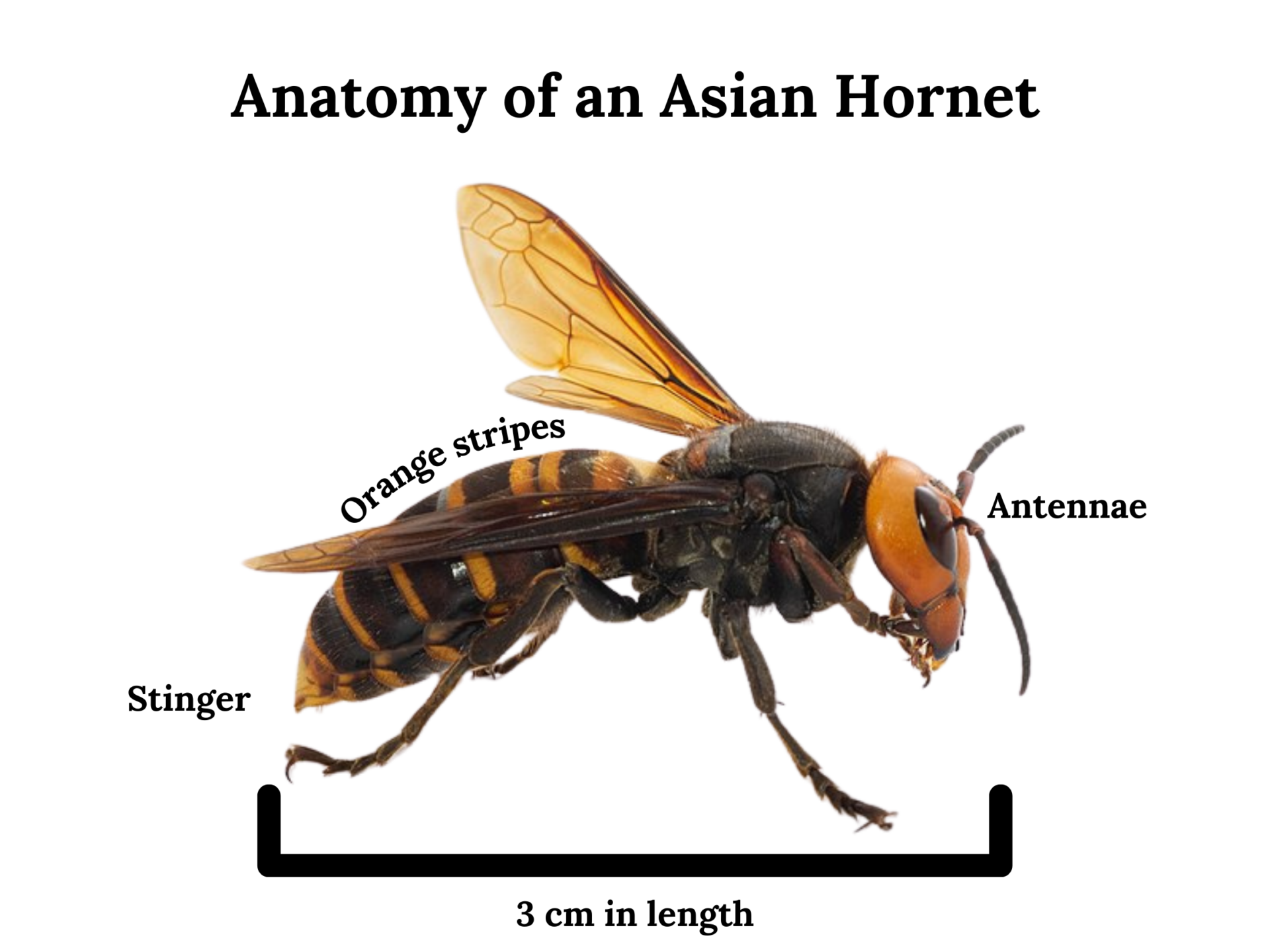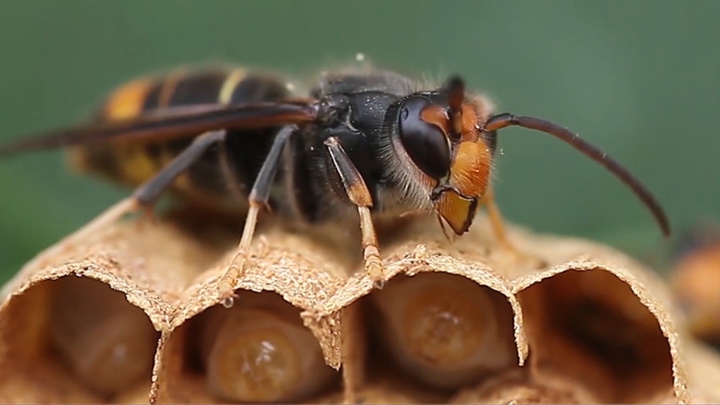The Agency for Nature and Forests (ANB) has said it will support further actions to help stem the increase of the Asian hornet population in the country, following reports that the allocated budget had supposedly run dry.
Last week, the Flemish Bee Institute (VBI), which is in charge of detecting and eradicating the Asian hornet, said that the budget it received to carry out its duties — €60,000 — was already used up, sounding the alarm about the situation. ANB has said it will continue to support control actions but criticised the VBI's messaging.
"We regret the atmosphere of fear that has been created. Asian hornets are not more dangerous, let alone more deadly than other native wasps. As with any species of wasp, care must be taken when finding a nest and certainly do not control it yourself, but consult professionals. Scaremongering is unnecessary and helps no one," a press release read.
However, ANB said that it is prepared to support further control actions, including any additional costs and that it will meet with the actors involved in the coming days to discuss where the need is highest.
Why is contol necessary?
The population of the exotic species of wasp in Flanders is growing rapidly, with 20 sightings of nests being reported in one day last month, a record. Data released by Vespawatchers, volunteers who look for nests of Asian hornets, shows the dramatic increase in the specie's population since the first Asian hornet appeared in Belgium in 2016.

The number of reports between August 2017 (op) and 2022 (bottom). The orange dots are reports of individual specimens, while the green dots mark reports of nests. Credit: VespaWatch
Being stung by a hornet is painful, but not necessarily dangerous, however, experts are very concerned about this sharp increase, because the Asian hornet is a threat to native bees, which are already endangered.
Related News
- Largest wasp in Europe found in Belgium for the first time
- Getting rid of wasp nests not considered an emergency, says Belgian 112
"A number of studies in countries that have had to deal with this invasive exotic species for some time now indicate that the damage to the honey bee is undeniable," the ANB said.
Vespa-Watch is asking citizens to be on the lookout for nests and report them – both so that data can be collected and so that they can be destroyed when possible.

Graphic by Abby Stetina for The Brussels Times. Photo credit: Wikimedia
The exotic wasp can be easily identified: It has a black thorax, an orange stripe on the belly and legs of which the ends are bright yellow. The insect can be up to 3cm long.

